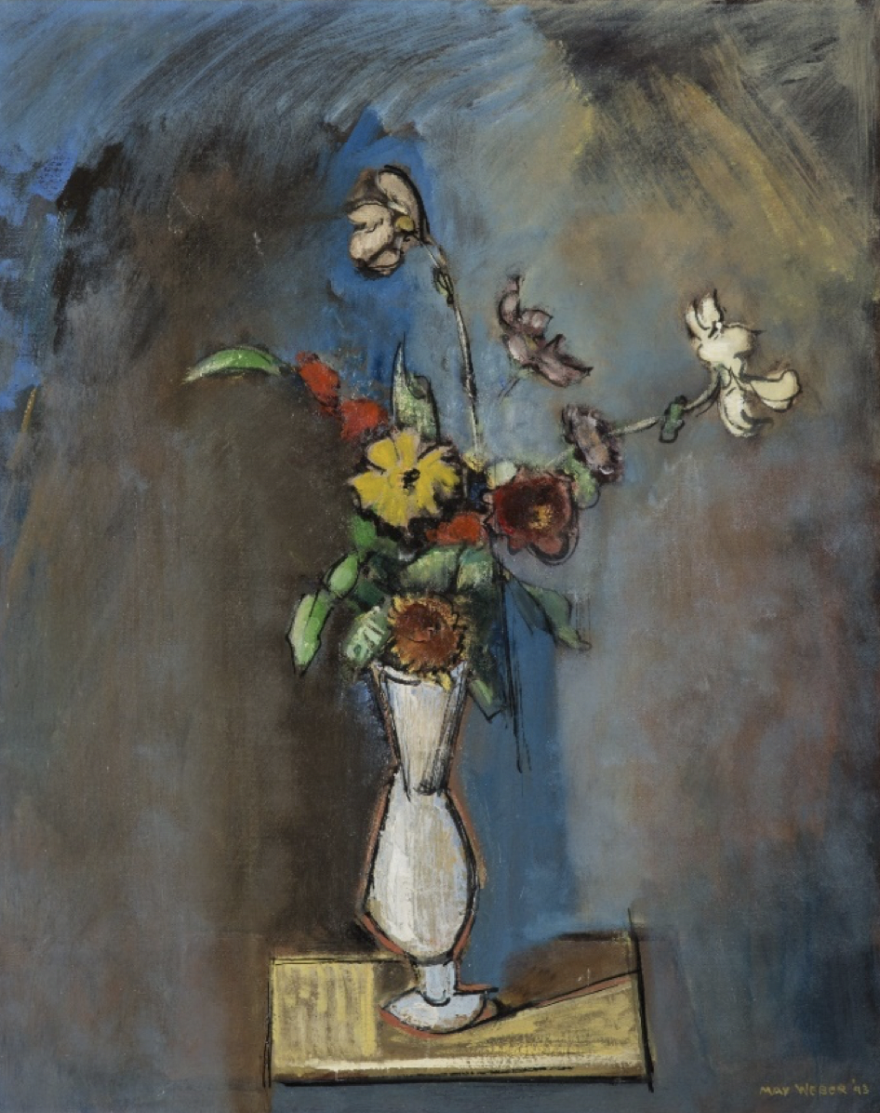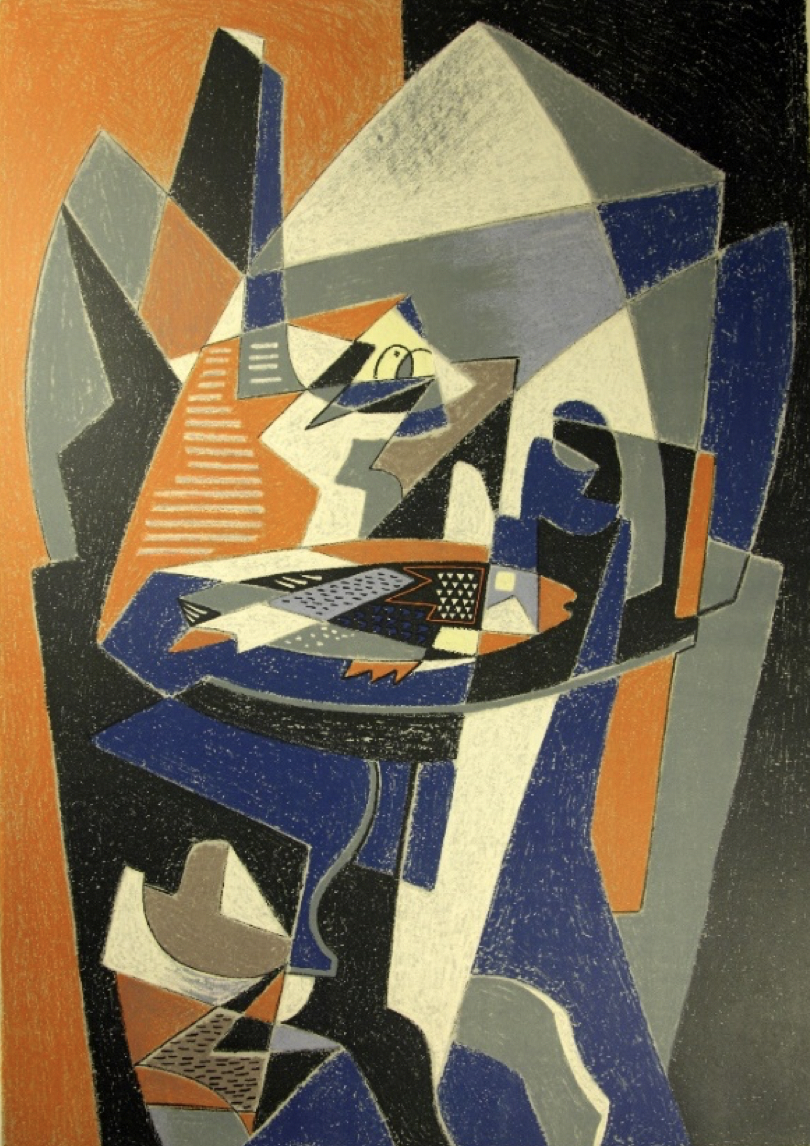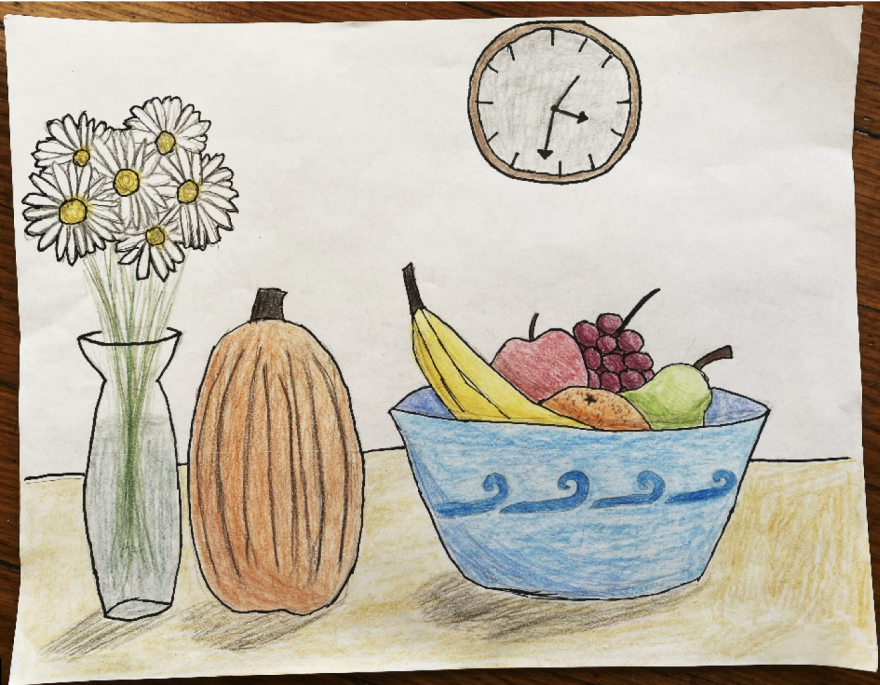Activity Guide by Kate Kwasneski
Intern, Grinnell College Museum of Art
Learn and Look
A still life is a piece of art that shows an inanimate object or a group of inanimate objects, like some flowers, a bowl of fruit, or some dishes. Paintings of inanimate objects have existed since the Ancient Greeks and Romans, but still lifes became a genre of their own in the late 16th century. Some of the most famous still lifes were from the Netherlands in the 17th century. This genre allows the artist to think about how objects are arranged in an artwork and to experiment with composition. Today, we are going to look at some still lifes from the Grinnell College Museum of Art collection.
Still lifes most often feature things that you might find on a kitchen table, like flowers or bowls of fruit. This example is no exception, a vase with flowers is a common subject of still lifes. The artist here has painted many kinds of flowers in a few different colors. What do you think of the flowers he has painted? What emotions does this painting make you feel?
This still life is of just one object. Often, still lifes contain many objects, but they do not have to. This painting is from the Netherlands, where many of the most famous still lifes come from. Look at the incredible level of detail in such a small painting! How many patterns can you see on this seashell?
This still life is of a traditional topic: fruit in a basket. This one does not have as realistic of a drawing style as the previous examples. Most still lifes are realistic, but they don’t have to be! This still life is also entirely in black and white. What do you think of this one? How does it make you feel?
Still lifes can be done in any art style, not just realistic art. An artwork just has to depict inanimate objects in order to be considered a still life. This scene is made up of a table with objects on it. Can you tell what is shown in this lithograph? What can you see?
Create
Now it’s time to create your own still life! What objects do you want to draw? It might be helpful to think of things that there are where you live, in your kitchen. Or, you can make something up! Draw fruit that grows far from your home, or draw flowers that you wish you could see. Do you want to add color, or do you want to draw in black and white? Still lifes usually include many details, so try to make your objects as detailed as possible. You could think about where the light is coming from in your drawing, and how that light would create shadows and shading. When you start to create your still life, draw with light lines at first. You can put down lots of sketchy lines to start, and then emphasize lines you want to keep, and eliminate lines that don’t work as well.
Here is a still life that I created. I drew a bowl full of fruit, a small pumpkin, and some daisies in a vase. I added a clock on the wall to fill up some empty space. Think about how your objects will look next to each other, and what size they are in relation to each other. You can try sketching your still life from several points of view before deciding on one. If you are drawing real objects, changing where you sit even a small amount can make a big change in how your artwork looks.
Write
Think about what happened right before your still life, or right after. Who put the objects where they are? What are they used for? Think about the room your objects are in, who uses it, and what they use it for. Write the story of your still life and the environment around it.





